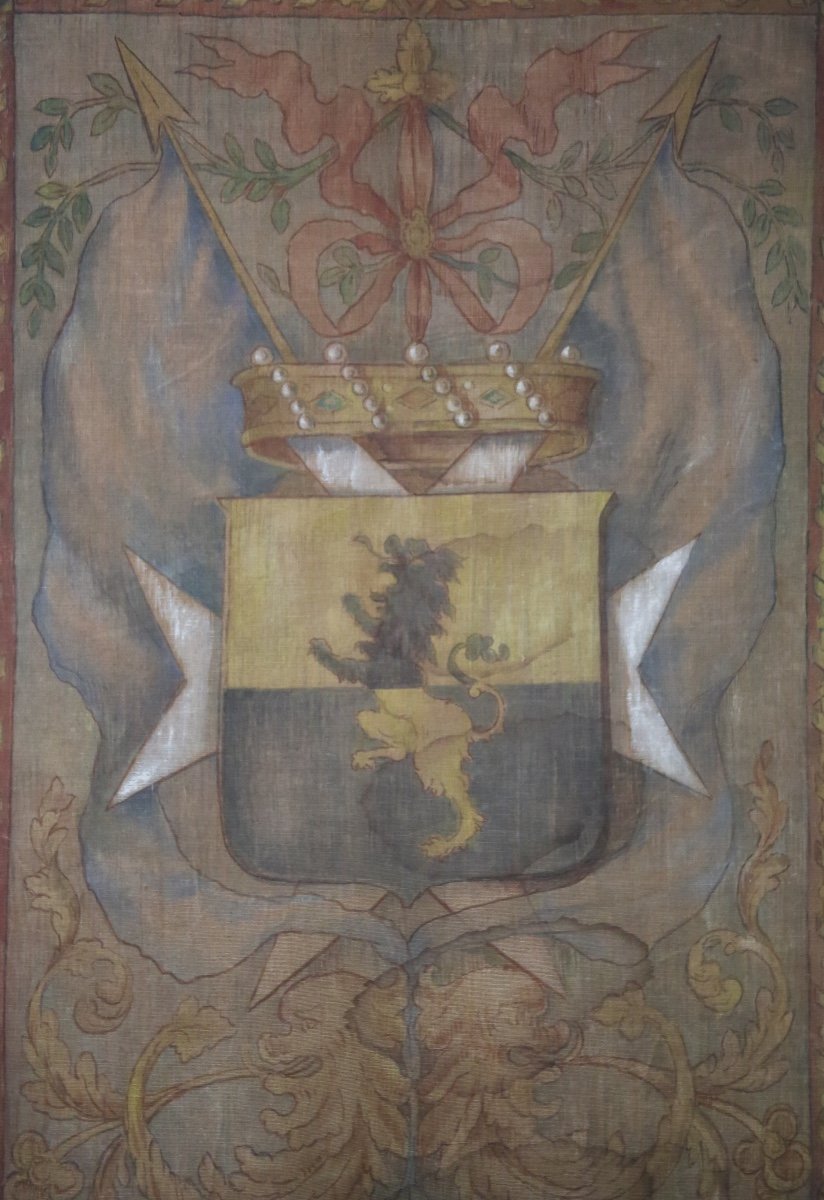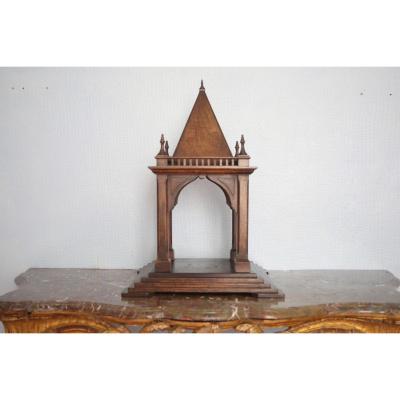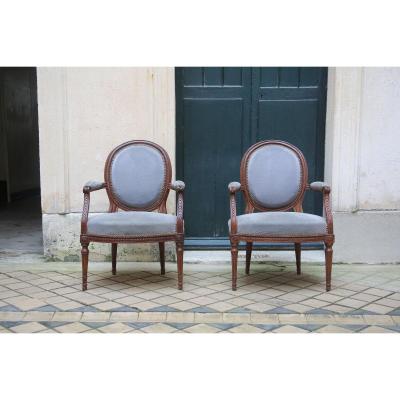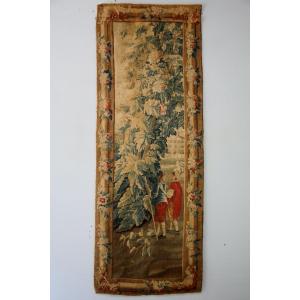- The central field has a light ocher background on which a coat of arms stands out (from bottom to top): - shield: with an accolade base, cut on the first gold, on the second azure with rampant lion with knotted tail broaching (azure above the partition line and gold below)
- lambrequins: silver - crown: gold with rows of oblique pearls topped with a red ribbon and two pavilion flags at the back. Below, facing masks extending into plant scrolls. The wide border, for its part with a turquoise blue background, submits to the law of the frame with elegance; floral scrolls at the top, scraps of ornaments from military trophies - breastplate, weapons (shield, spiked weapon mace, axe)
- connected by a red knotted ribbon; in the lower part the ribbon continues its course, bypassing a vase surrounded by the same floral scrolls. The southern color palette offers very pleasant contrasts using backgrounds in pastel shades (light ocher and "watercolor" blue) against which patterns in more intense colors stand out (white lambrequin, red ribbon, yellow/gold scrollwork). ...).
- This type of painting on canvas belongs to a production traditionally called "grass juice" ("succhi d'erba"). It corresponds to paintings imitating tapestries made with colors of plant origin, in water, on linen or silk textile canvases. A technique used from the second half of the 17th century which also enjoyed great success in the 18th century to decorate large residences and churches because it made it possible to offer a decoration as imposing as a tapestry or silk with the advantage of being made faster and at lower cost.
- Ephemeral in nature, these "painted tapestries" have not benefited from any systematic conservation measures. This explains their rarity since a large part of the production of these paintings has now disappeared.
- Good state of conservation with some wear and humidity stains (see photos). Canvas fixed on a cleat of the same width allowing it to be hung.
- Dimensions; height: 302.25 cm, width: 205.5 cm
















































 Le Magazine de PROANTIC
Le Magazine de PROANTIC TRÉSORS Magazine
TRÉSORS Magazine Rivista Artiquariato
Rivista Artiquariato